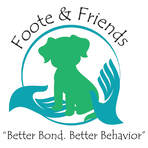|
Originally published 11/16 When I think about this, I envision two pictures, both of a cute donkey attached to a cart with a child sitting in the cart.
In the first picture, the donkey and child appear very happy, and the child is dangling a carrot in front of the donkey's nose. The donkey is stretching out his nose to get the carrot. In the second picture neither one looks particularly happy, in fact, they both have very stubborn looks on their faces. In that picture, the child is using a stick to hit the donkey and make it pull the cart. Now we all know that most people do not get horses or donkeys to pull carts by dangling carrots in front of their noses, and initially, the image is kind of silly, but it illustrates a very good point: Which is the better way to get things done: reward or punishment? Those of you who are total geeks like me or if you have a background in psychology will point out that I have already made a mistake. The stick actually represents negative reinforcement, NOT postive punishment. Actually, it depends on how you use the stick, but we will get into that later. Those of you who are normal and don't have a psychology background are probably saying to yourselves, "who cares." So, I will get back on topic. The carrot or the stick? Reward or punishment? Naturally, if you were on the receiving end, you would vote for reward. Most people also prefer giving a reward versus doling out punishment, at least in theory. However, we are programmed as a species to focus on things we don't like, and calmly accept things we like. We don't tend to mark good behavior, and we tend to get angry about bad behavior. Punishment is a direct result of this. Your dog gets excited and jumps on you when you come home. Do you punish him or reward him? Of course you shouldn’t reward your dog for jumping on you unless this is a behavior you want to encourage. So you focus on reacting to the behavior. Many nuisance behaviors present a similar dilemma. This is also one reason it is difficult to get a child to quit sucking his thumb or why dieting is such a challenge, and why it is so difficult to quit smoking. In all these examples, we are trying to teach a negative. What do we naturally think of when someone tells us not to think of pink elephants? Not blue rhinos, PINK ELEPHANTS. So when you try to teach your dog not to jump on you, he is constantly fighting the urge NOT to jump. When you punish a child for sucking his thumb, he thinks about it even more. If you go around saying "I will not smoke," you are torturing yourself because you are even more focused on the fact that you shouldn't have a cigarette. The second reason that breaking bad habits is difficult is that, by definition, the reaction to an unwanted behavior is punishment. There are four elements of learning theory: Positive reinforcement, negative reinforcement, negative punishment, and positive punishment. For a moment don't think about positive as good and negative as bad. Think of positive as adding something and negative as taking something away. Reinforcement means you want to encourage the behavior. Punishment is what you do to stop or decrease the frequency of the behavior. Therefore, if your dog jumps on you, and this is a behavior you are trying to discourage, punishment must be the response. Yes, that's what I said, punishment must be the response. Why? Because if you do anything to stop or decrease the frequency of a behavior, that is punishment, by definition. Fortunately for your dog and your relationship with your dog, there are two types of punishment: negative and positive. Positive punishment is jamming your knee into his chest when he jumps up or yelling at him or whatever unpleasant thing people do in response to a dog jumping. Negative punishment means taking something away to decrease the frequency of a behavior. In this example, your dog is jumping on you because he loves you (hopefully) and is excited to see you. Ignoring him is negative punishment. In a dog's mind, ignoring him is often much worse than beating him. Be aware, if you turn your back, but are saying," sit, sit, sit," the whole time or if you are waving your arms or moving around, your dog might think this is a fun new game, and you may be reinforcing your dog's jumping. It is much easier for us and dogs to learn a positive behavior. A positive behavior being something your dog can do, not something you want him to STOP doing. Puppies can easily learn to sit in 5 minutes at 6 weeks old. This is very rewarding because sitting is considered good manners in the dog world, and it fun to reward our puppy for sitting. You can show his new trick off to your friends, and even people who don't like dogs like them better when they are sitting. Another wonderful thing about sitting is that is physically impossible for your new puppy to jump on you while he is sitting. Interesting... Let me summarize: 1) It is more fun to reward that punish, 2) It is much easier for a dog to learn a positive behavior than a negative behavior, 3) A dog can't jump when he is sitting. So, teach your dog to sit- frequently, in all sorts of situations. Make it so your dog sits without thinking about it. Make it so if your dog is unsure about how to react, he sits. Then, when you come home, and he's excited to see you, and he jumps on you, utilize negative punishment: turn your back on him, ignore him. When he sits, reward him then. Make sure you reward him. That's how you teach a dog not to jump on you. Maybe there are situations where you need to use the stick, but I prefer to use the carrot whenever possible.
1 Comment
5/14/2020 07:12:03 am
Thank you for the tips that you mentioned above. I believe that disciplining your pets is indeed a difficult thing, but there are ways on how you can master it out. Aside from patience, you should know their signals too. Since animals cannot speak, we should be mindful of their actions and know what they mean. Your tips will always be helpful to me because that's how it should be; animals are complicated to be taken care for, but they could be a great source of happiness for some!
Reply
Leave a Reply. |
Dr. Andi
Mostly behavior with a little life mixed in! Archives
March 2023
Categories |
Contact Us:
|
Hospital hours:
Monday: 6:30am - 6:30pm
Tuesday: 7am - 7pm Wednesday: 6:30am - 6:30pm Thursday: 7am - 7pm Friday: 6:30am - 6pm Saturday: 8am - 1pm Closed Sunday |
|
Site powered by Weebly. Managed by IDEXX Laboratories
|
 RSS Feed
RSS Feed





